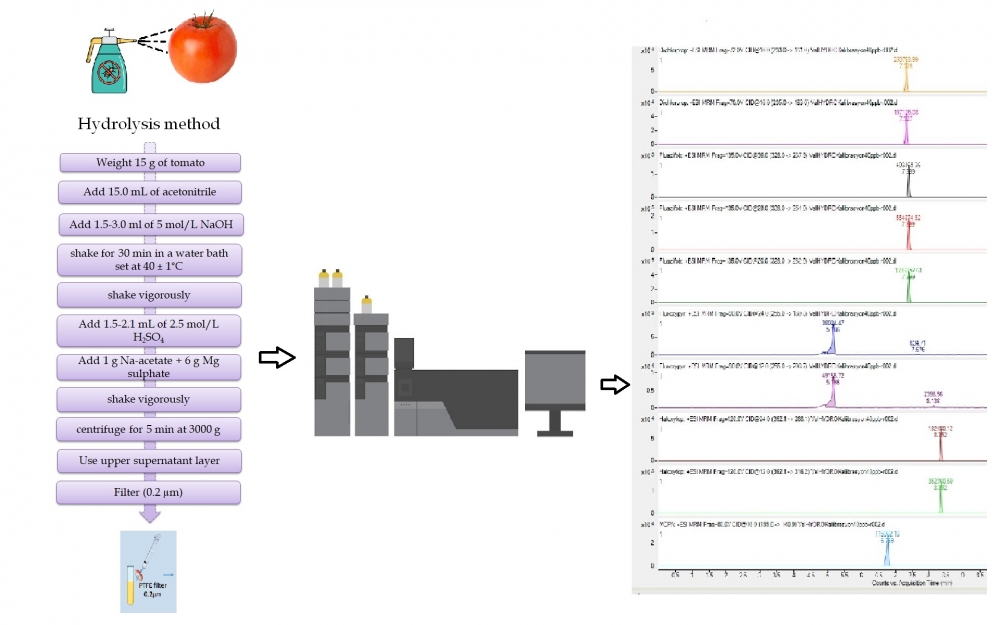JOURNAL 3088
Records of Agricultural and Food Chemistry
Year: 2024 Issue: 3 Special Issue: Abstracts 3rd. TCS, International Food Chemistry Congress February 29-March 03,2024 Antalya Türkiye
p.50 - 50
Viewed 1242 times.
-
Gülden Hazarhun

-
Burcu Gumul

-
Busra Maden

-
Kubra Ayyildiz

-
Simge Ertas Ozkan

-
Ecem Ezgi Arabaci

-
Nabi Alper Kumral

GRAPHICAL ABSTRACT

ABSTRACT
Pesticides with acidic properties, such as 2,4-D, 2,4-DB, acibenzolar-S-methyl, clopyralid, dichlorprop, haloxyfop, fluazifop, fluroxypyr, mecoprop, MCPA, MCPB and quizalofop, could pose health risks, because of their neurotoxicant potentials and adverse effects on endocrine and reproduction systems. Since the use of these compounds are still permitted in several countries, their residues on fresh agricultural commodities should be monitored with proper analysis methods. Unfortunately, determination of their residues is difficult due to their tendencies to form various conjugates with matrix components. Although the QuEChERS method is commonly used for extraction of pesticide residues on fresh vegetables and fruits [1], it is not appropriate for reliable and accurate analysis of the acidic pesticides due to transform their several esters and conjugates [2]. To overcome the drawbacks of QuEChERS method during the analysis of acidic pesticides, addition of a hydrolysis step in sample preparation may be taken into consideration [2,3]. The aim of the current study was to optimize and validate an LC-MS/MS method for the detection of acidic pesticides on fresh foods using alkaline hydrolysis of their esters and conjugates. The multi-residue analysis of 12 active compounds was found compatible with the SANTE/11312/2021 Guidelines. [4]. The quality of the developed method was also testified by both TestQual and QS proficiency tests. The scope of these proficiency tests is the evaluation of the performance of laboratories for the determination of pesticide residues on foods and they provide information to demonstrate the quality of the analysis. Thus, our method was found as reliable and effective to use for the detection of acidic pesticides in fresh foods using LC-MS/MS. In the current method, these pesticides were extracted by using a modified QuEChERS method (AOAC 2007.01) involving the addition of acetonitrile and NaOH together to the sample tube for simultaneous extraction and hydrolysis. The tubes were shaken for 30 min in water bath set at 40°C and then the reaction was neutralized by the addition of H2SO4. After the addition of buffer-salt mixture, the sample was immediately shaken vigorously and centrifuged. Lastly, the supernatant was transferred to vials and tested with LC-MS/MS. PSA-clean up step is not performed in the method. This study was funded with as a research project (grant number ULUTEK STB079417) by Perla Fruit Company.
KEYWORDS- Acidic pesticides
- alkaline hydrolysis
- analytic method
- food safety
- modified QuECHERS method